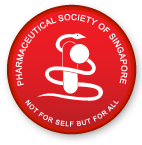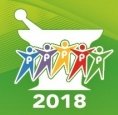For more than 20 years, pharmacy in Singapore has undergone significant transformation. From the product-focus and supply-driven roles; we now venture stridently & resolutely into “clinical” roles which focus on patient-centred cognitive services on the one hand, and into ensuring safe and effective development, commercialization, regulation & surveillance of medicinal products on the other.

Like it or not, this takes less than one generation of a typical pharmacist’s professional career. It is to be expected nowadays that all workers must change with time, not just pharmacists. For many caught in such vortex of change, it’s a journey of imperative professional evolution & development; for others, it’s a challenge to catch up. Since change has become an inseparable part of today’s global economy, I think the greater uncertainty we are facing as a professional and a profession revolve around the dilemma of which is the right track for the future? With every turn we take and decision that we make now, we need to have the courage to look back with little or no regret 5 to 10 years later. Our leaders – the academicians, the MOH policy makers, the pharmacy managers, the trade and industry leaders, the professional organization like PSS etc - have been spending a lot of time and efforts thinking and planning, which we believe are in the best interest of our profession. Right or wrong, the future will tell if the history had been wise and strategy optimally executed for the profession.
Now that the decades old Pharmacist Registration Act (PRA) has been amended, features which we intended for the future good of our profession were built in. Two major parts of the features which I would like to explore a little.
Firstly, the compulsory CE.
CPE is the most explicit and transparent commitment to develop oneself professionally. This facilitates one to remain contemporary and be in sync with the ubiquitous information in today’s IT age. Pharmacists, like many other fellow healthcare workers, have better be current in our knowledge and information. Our public knows a lot, we must know even more. CPE must be a part of our professional life, whether or not if we are in patient-care sector. CPE has hitherto been branded as being organized by those working in hospitals or retail pharmacy, for those working in hospital and retail pharmacy. Naturally so, it’s quite unlikely for our colleagues in hospital and retail to organize CPE for our counterparts in the industry, regulatory affairs, marketing, logistics & supply chain, CRO etc. We do have expertise in the non patient-care disciplines, but they are more heterogeneous that there should be interest groups formed within the PSS Industry Chapter to gather, for instance, regulatory affairs pharmacists from all the MNC, to share issues related to work, related to dealings with our regulators etc. This allows greater cross fertilization of ideas and could also serve as a dialogue or even lobby partner under the PSS umbrella. That way, we can really sync our expertise with the industry, and be part of influencers of future policies and trends; rather than a mere user or recipient.
Secondly, the Pharmacist Specialist Register (SPR).
This is a bold and futuristic move, pretty unprecedented in the region and perhaps in the world. There are increasing needs to develop the professional career track for pharmacists, especially those working in the patient-care setting. Typically, pre-reg pharmacist will advance into pharmacist, senior pharmacist, principal pharmacist, senior principal pharmacist and further career advancement opportunities often have to be pursued outside the pharmacy department. Plans are now being built in the amended PRA to enable pharmacist be legally recognized as “specialists” in the area of their specialization, whether they are in patient-care specializing in clinical nutrition, dermatology, oncology, transplantation etc; or those working in regulatory affairs, clinical research, formulation, quality assurance, supply chain management etc. Passing the PRA and making room for SPR is the easy bit, the challenge ahead will be how to accreditate and assess the “specialists”.

The challenges ahead are intense, but it is one of the most exciting times for pharmacists and the profession going forward. With the reinvigorated set of PRA now, the next step is to plan and execute what we deem best for our profession. Given our small size, we must move together as a coordinated force in synchrony with each other’s strength and expertise. Then 10 years from now, we hope to look back and be comforted that our efforts have been worthwhile, our new generations are perpetuating the cause of improving the health of mankind; and more importantly, the public that we serve sees and feels that we are in sync with what they want from us in their healthcare needs.

Ng Cheng Tiang
President
Pharmaceutical Society of Singapore
**********


